Bournemouth have surpassed expectations this season after a tragic opening month to the season. After sacking Scott Parker within a month of the season’s opener, Gary O’Neil took the reigns and has since made Bournemouth a difficult team to play against.
Although Bournemouth are not mathematically safe from relegation yet, only a series of unlikely events would cause them to fall into the drop zone. Leeds United, Leicester City, Nottingham Forest and Everton would all have to beat multiple teams, who currently occupy European places, as well as any other remaining games this season in order to overtake Bournemouth’s tally of 39 points, who would also have to lose every remaining fixture.
With the likes of Man City and Newcastle United still to play the relegation favourites, it is likely that Bournemouth will retain their Premier League status.
One of the key reasons why Bournemouth have been able to stay away from the drop zone in recent weeks has been their ability to be efficient from set plays. With fewer corners won than 16 other Premier League sides, Bournemouth are an underrated dead-ball side due to the limited opportunities they’ve had to showcase their methods. The Cherries have scored 9 set play goals this season in the league, with those goals earning Bournemouth 9 points. They currently sit 9 points adrift of the drop zone, so it is fair to say set plays have been the difference between relegation and safety.
Gary O’Neil must be given credit as his ability to make Bournemouth more solid at the back and dangerous in attack meant that they have been able to amass points through different means, not only through set plays.
In this tactical analysis, we will look into the tactics used by Bournemouth, with an in-depth analysis of how they have been able to use different routines to create high-quality chances in their variations of corners. This set-piece analysis will look at the reasons behind the different routines used and how their ‘All or Nothing’ routines separate the south coast club from the rest of the league.
Use of screens
Bournemouth’s most efficient use of corners has come through their use of screens to create space. Although the riskiest method, which has really separated Bournemouth from many teams, is their intent in directing the corner to one target player, whilst every other player in the box has a clear role to either create space for the target player or to attack a second ball. Only one player attacks the target area, which makes these types of corners do-or-die situations. The starting positions of a routine are shown below with the players highlighted in black acting as screens, the player in blue as a decoy runner whilst the target player is in green.

The designated players who set up a screen deliberately start separated before all joining up to protect the target area shown in black. The aim in these corners is to keep your cards close to your chest, so if the attackers all set up the screen before the corner is delivered, it would be clear where the target area is and so a defender could zonally protect the area.
The player in blue starts in the target area before making a decoy run away from the target area to drag any defenders away from it. This opens up the space for the target player to attack the target area. His starting position is deliberately behind the defender’s back shoulder, as it gives him instant separation, with the marker having to back up in order to see both the ball and the player.
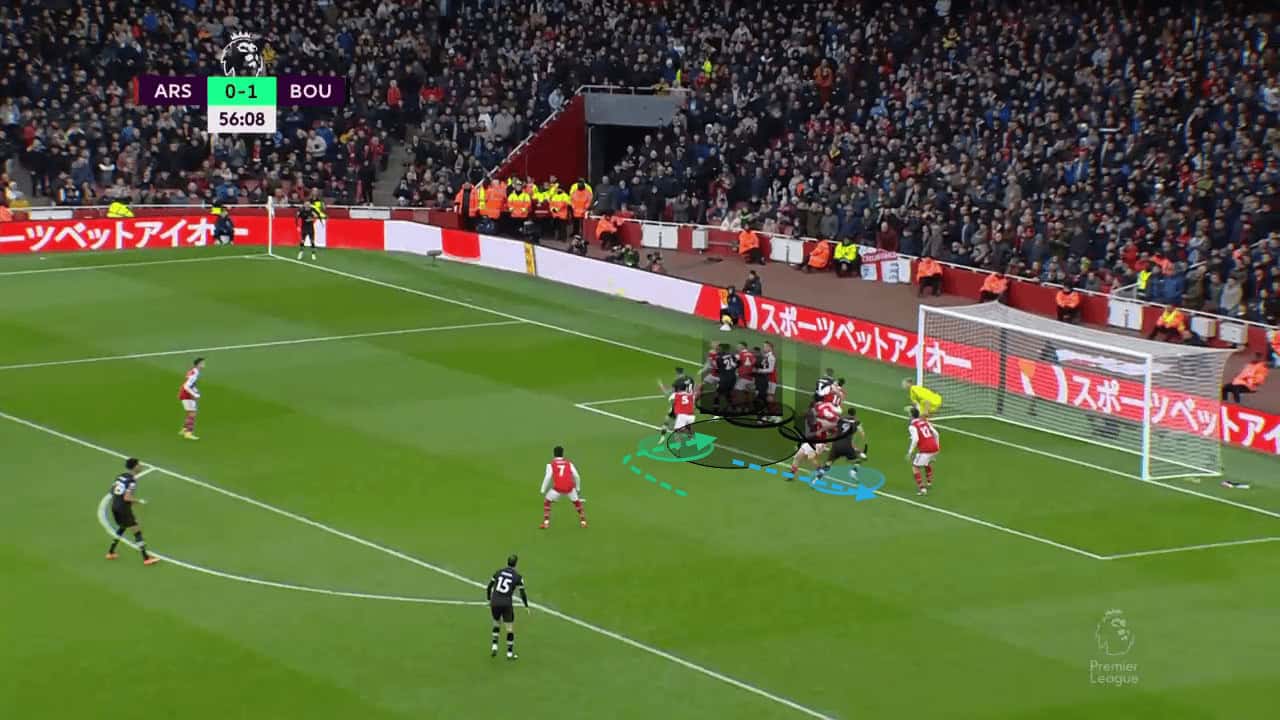
Another use of screens comes through creating space at the back side of the six-yard box. Against this zonal Everton defence, the space inside the six-yard box is more limited and so Bournemouth choose to attack the more open space near the back post. The screen set up to protect the back side of the six-yard box is set up by Billing, whilst Kieffer Moore arcs his run to the back post.
Starting the run in a central position allows Moore to attack the target area unmarked as the defenders have a choice between keeping their eyes locked on the ball or the man. The longer run also allows Moore to attack the ball with speed, increasing the power on the ball. From the back post, he can either attempt a shot on goal or head the ball back into the six-yard box for an opportunity in the second phase.
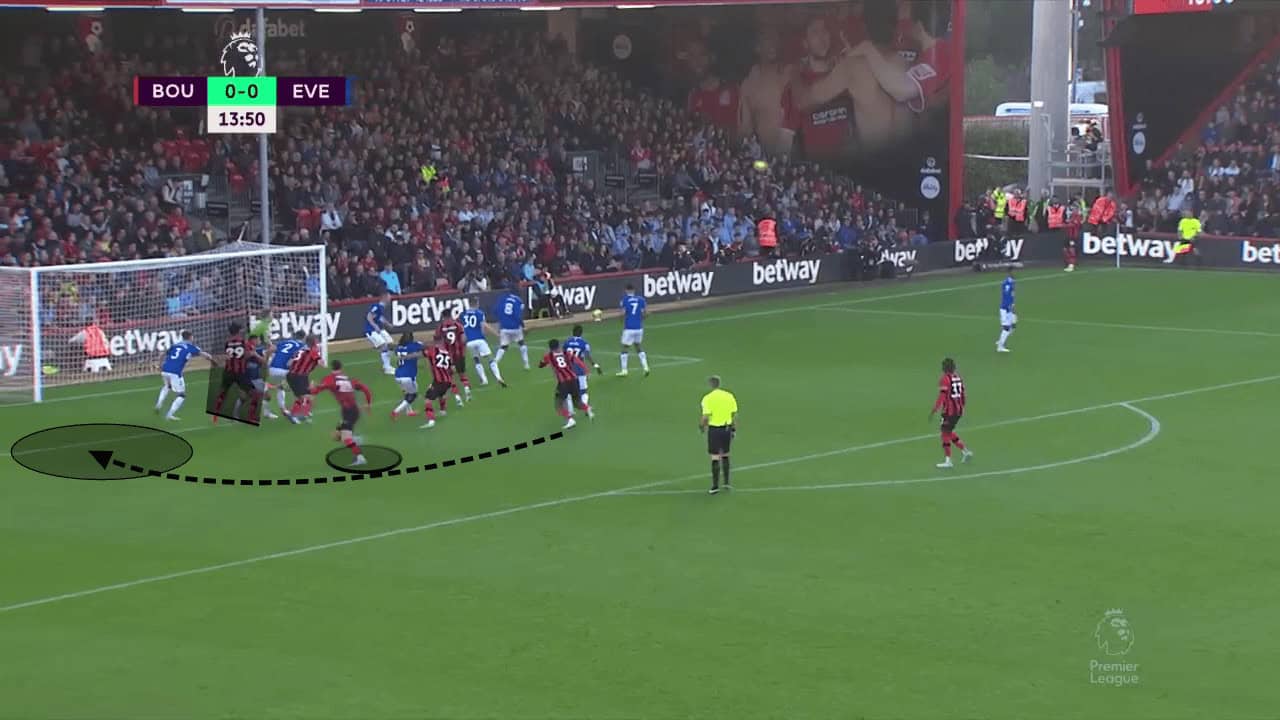
Near-post variations
One other way in which Bournemouth have been able to create chances through set plays has come through different types of crosses into the near side of the six-yard box. In the image below, we can see the use of another screen, although the body position of having the back to the defender’s front allows the attacker to use his arms to pin the defender in place. This allows a runner from deep to arrive in the target area unopposed.
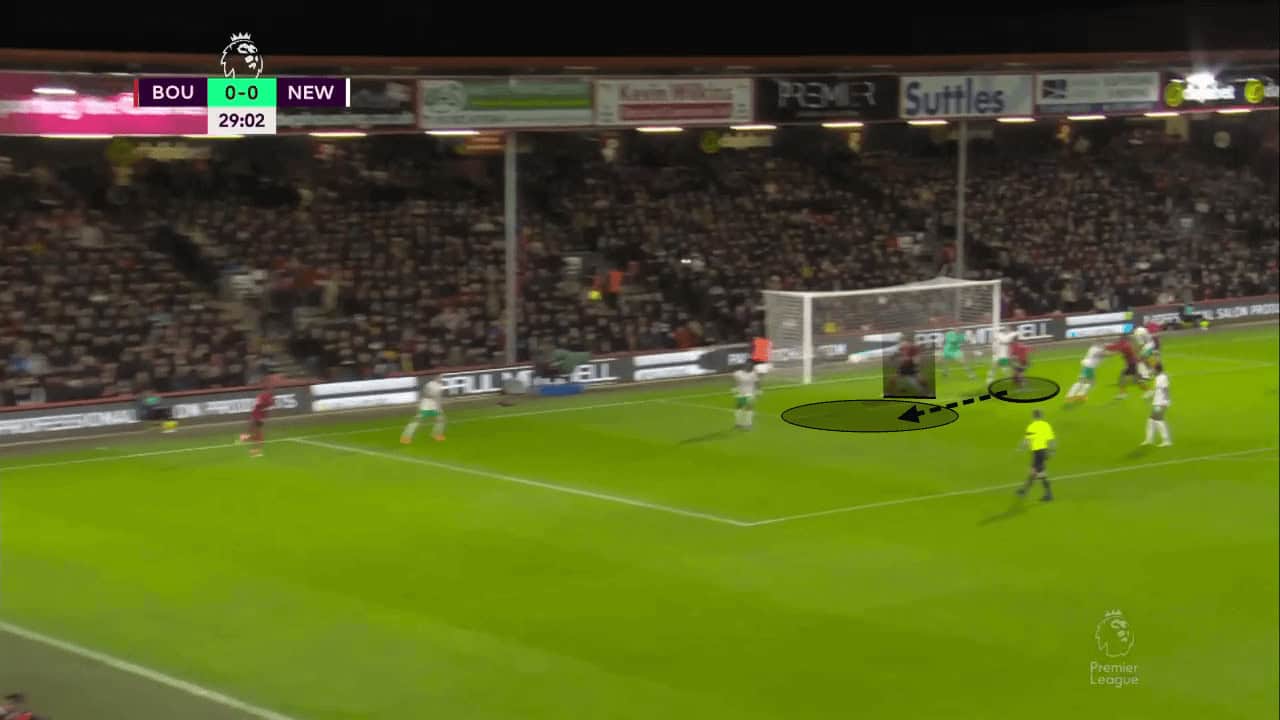
Following the near-post delivery, the intent is to flick the ball towards the back-post, where there is a player making a late arrival. The ability to redirect the ball into the back-post area through a flick after the first contact allows the player arriving at the back post to be unmarked and with the possibility of getting a free shot on goal from within a couple of yards.
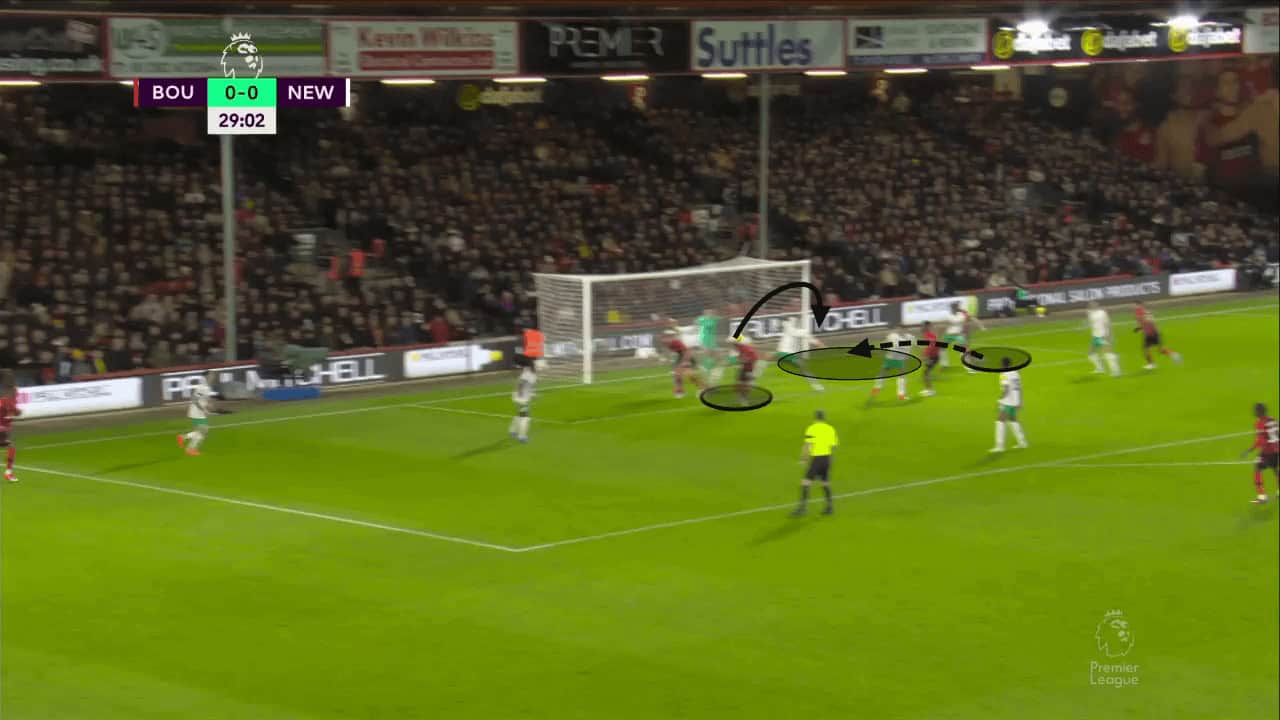
An alternative method of attacking space at the near side of the six-yard box has been through the use of flat deliveries, no higher than hip height. This method of corner has a lesser chance of being intercepted or mishit, although it becomes harder to score directly from the tight angle, where it is only possible to flick the ball with your foot.
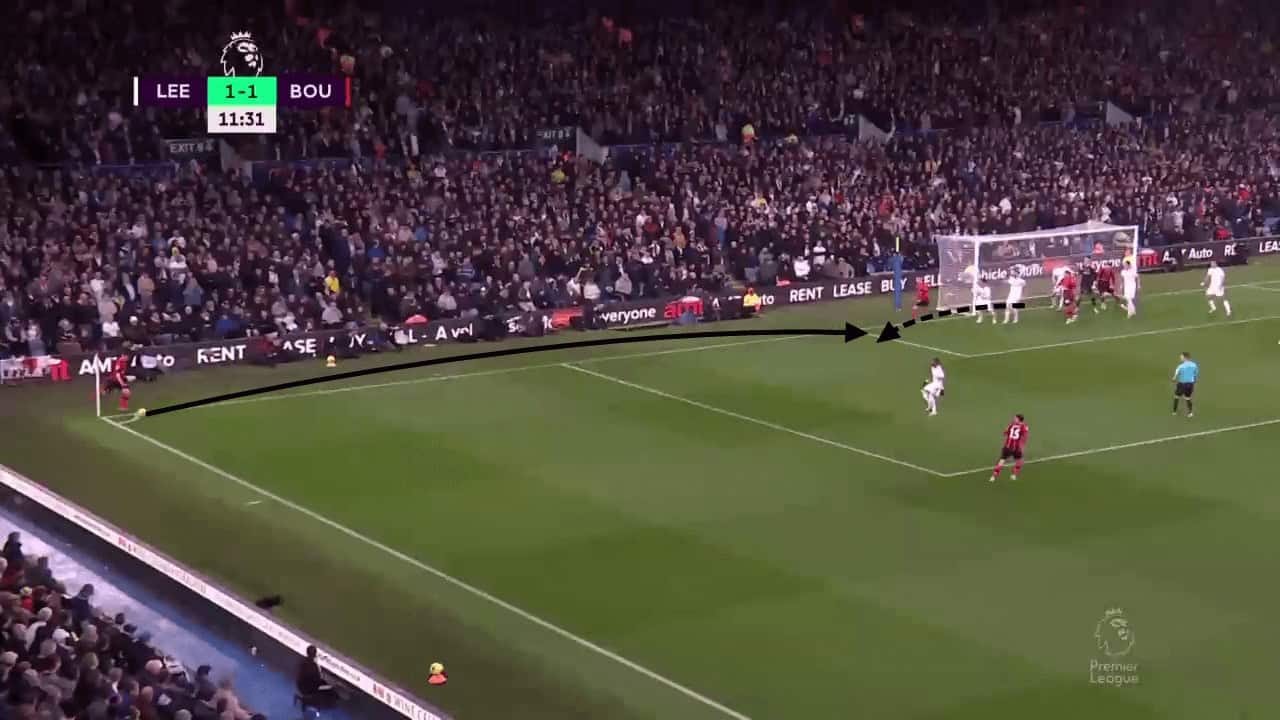
Bournemouth have been inventive in their use of these flat near-post crosses. While usually, it is common for the ball to be flicked towards the back-post, Bournemouth have used the typical assumption to their benefit. Instead of attacking the back-post, which would be expected, the Cherries instead opt to target the space left at the near-post, through a deft flick of the cross, which takes the power off the corner and adds height to the ball. This recreates the trajectory of a floated cross towards the near-post which the player highlighted below can attack with a run from deep.
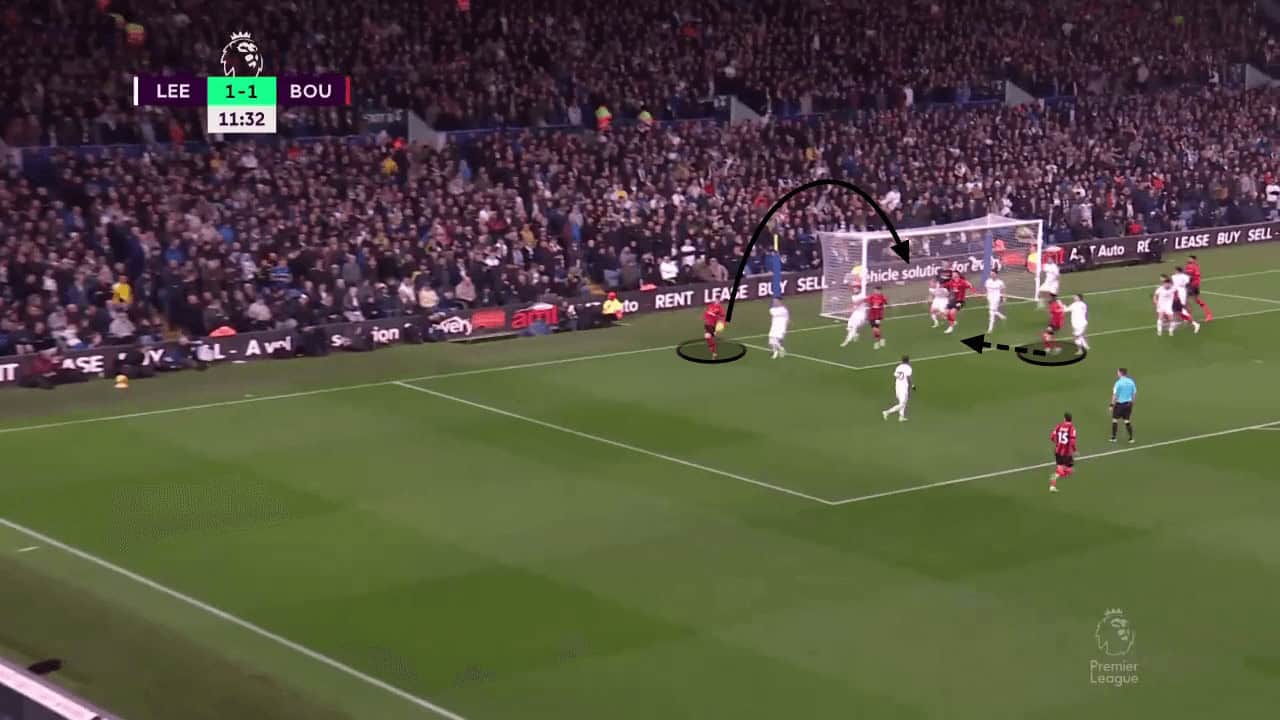
Short routines
One final way in which Bournemouth have been able to remain dangerous and unpredictable from dead-ball situations has been through the use of short corner routines. They have utilised short corners to alter the defensive structure of opposition teams, in order to force spaces to open up which happens as a result of unorganised defenders recovering back into their positions.
In the diagram below, we can see the short corner being played and passed backwards which encourages the Fulham defence to step up and increase the height of the defensive line.
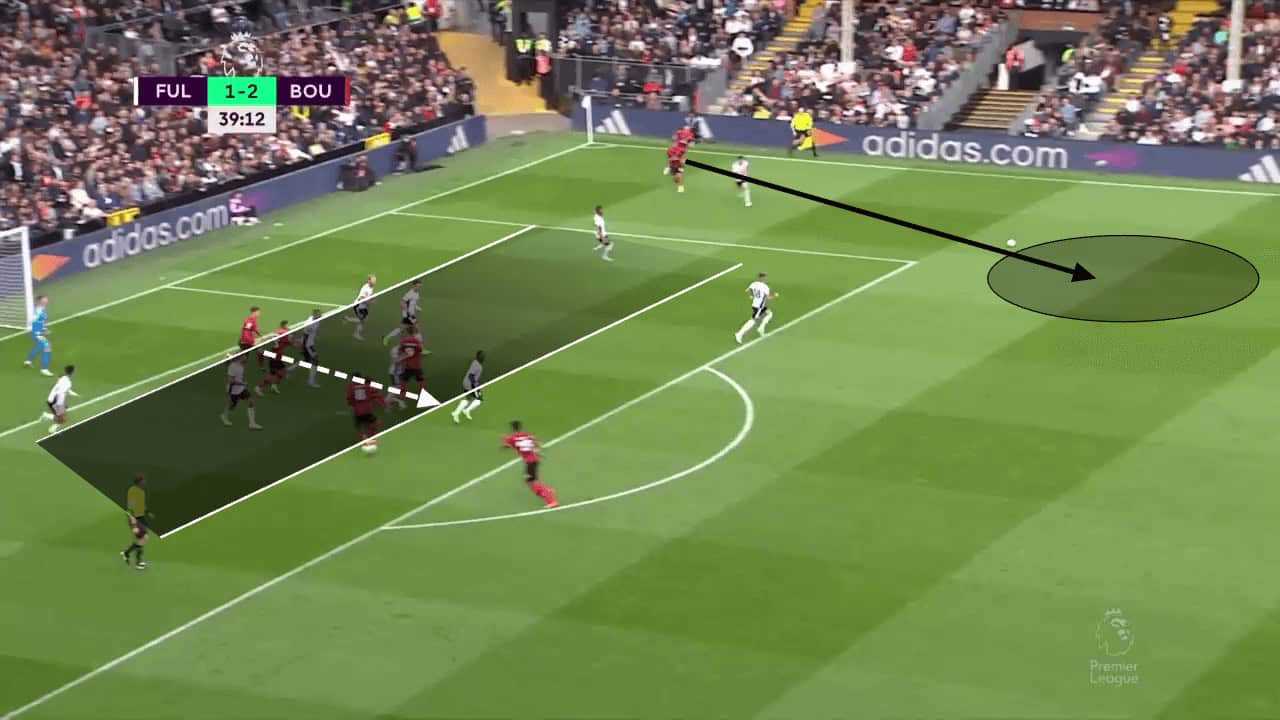
While the defenders step up, they begin to lose track of which player is responsible for which attacker, resulting in the Bournemouth attackers being able to make runs into the box without being tracked. It takes high levels of focus and constant communication to be able to track each of these attackers whilst attempting to shift the defensive line.
Furthermore, with the defenders moving away from the box, Bournemouth utilise the opponent’s momentum to attack in the opposite direction. With the defenders being pictured square on, it is difficult to change direction while the Bournemouth attackers are able to sprint into the box.
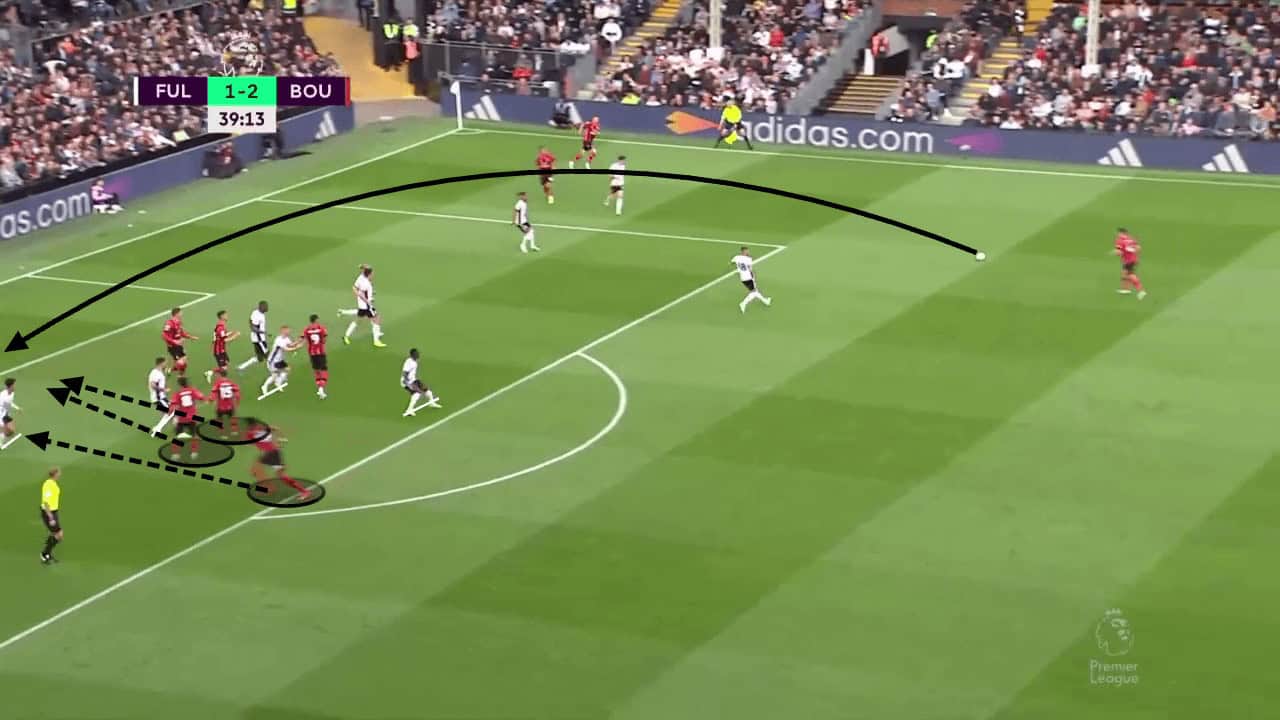
By the time the Fulham defenders have turned around, the multiple Bournemouth attackers have all sprinted into the box, leaving them with a 5v2 situation around the six-yard box. The opposite movement to the defenders allows the Bournemouth attackers to have the advantage in the aerial duel, whilst there are also numerous attackers waiting at the back post to attack any rebounds or headers across the six-yard box.
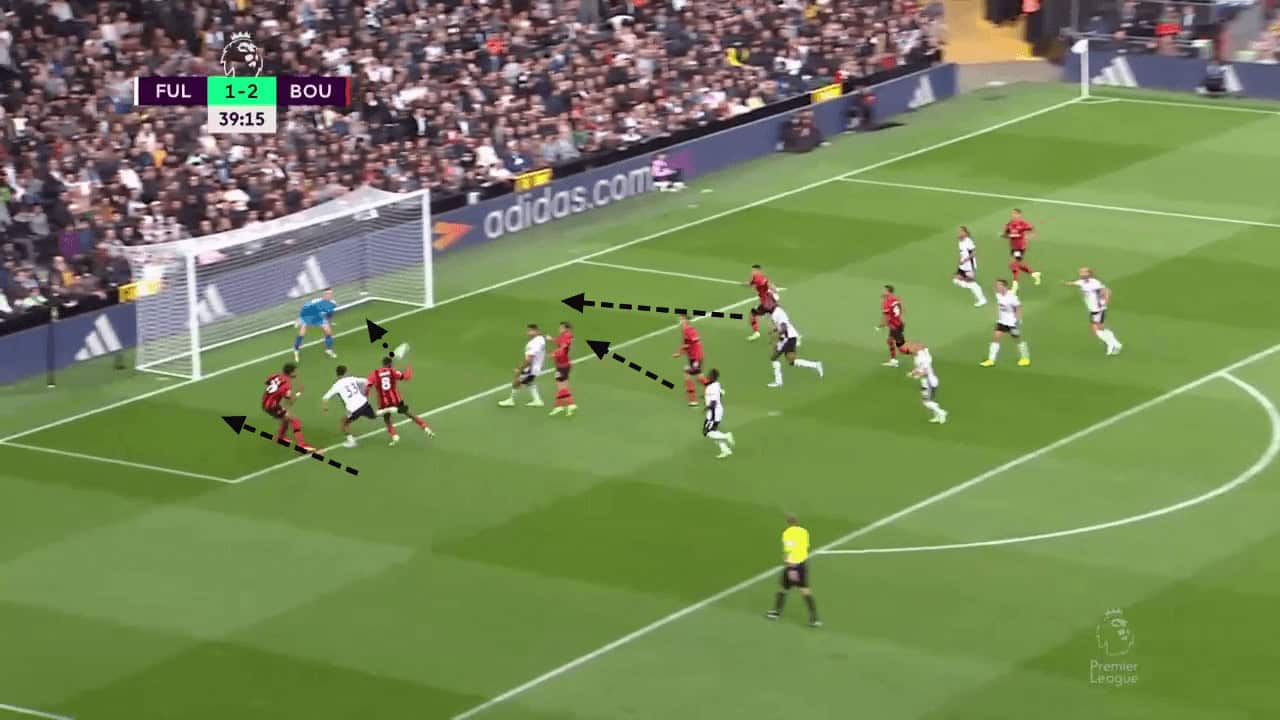
Summary
This tactical analysis has detailed the numerous different ways in which Bournemouth have been able to be one of the two most efficient sides in the Premier League, with only Brentford having a higher xG per corner ratio. Although they haven’t had many corners, Bournemouth have displayed what is possible with some planning, preparation and aerial quality in a side.
Their unique style in attempting to create clear-cut chances for a specific player in each corner routine has led to a high number of high-quality chances being created. While this may seem like a risky approach, if every player in the routine performs their task, this is more feasible than it seems and should be attempted by more clubs in the league.
Currently sat in 13th, Bournemouth are on a hot streak of form with 6 wins in their last 9 games. Their fine form after Gary O’Neil’s stint turned permanent shows just how influential a coach can be, and if the run can be continued into the last four games of the season, Bournemouth could be on track to finishing on a record points total in their history in the Premier League.






Comments